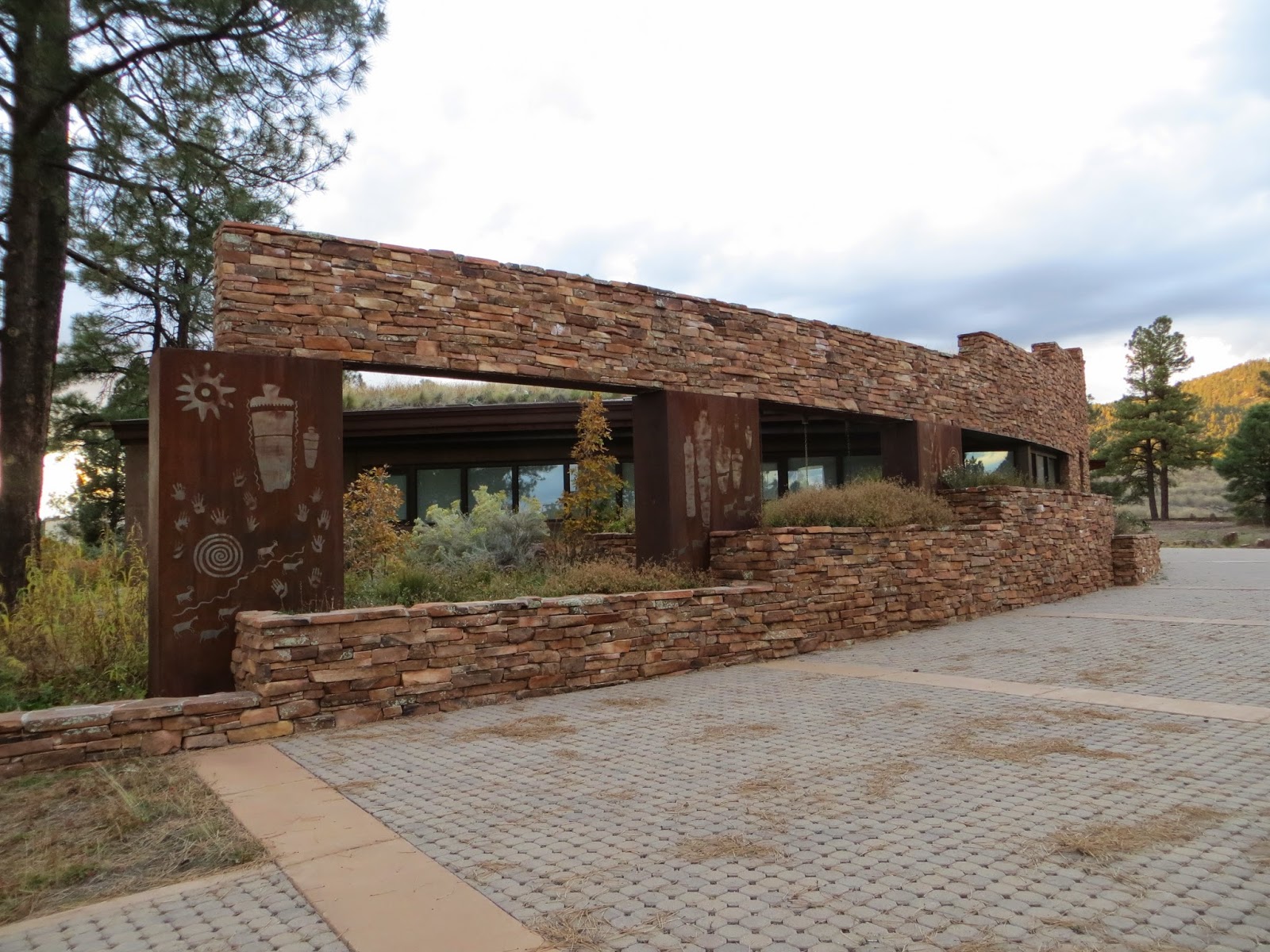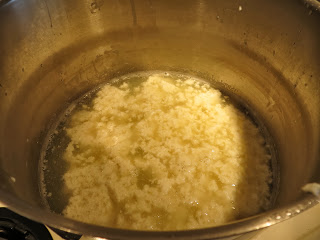I have now been in Arizona for four weeks, and I feel that I am finally settling in a bit. I've driven around Flagstaff, learned the lay of land (to some degree, anyway) and visited some sites around the city.
And I am living in chicken coops.
 |
| Me and my chicken coop |
Take it from me, this is much
nicer than it sounds. First of all, think of the structure part of a chicken
coop, not the chicken-wire part. Each coop is really a cozy
little cabin, with a bed, desk and closet. And because Mom drove up
here with me I have the largest coop which, in order to accommodate two beds,
is about double the size of most of the coops.
Really the only downside is that
the bathroom and kitchen are a short walk outside. This isn’t so bad in the
middle of the day, but early in the morning when it’s 20 degrees out and the roofs are
covered in frost or late at night when it’s dark and cold, it’s not as fun. It
also wasn’t too fun when I locked myself out of my room without my phone and
had to sleep on the couch in the common room.
Then again, on my nightly
walks to the bathroom I’ve seen two herds of deer, a big jackrabbit, heard
coyotes singing and seen three shooting stars. I guess I shouldn't complain too much.
Most of my work here will be done in the old collections storage. However, a large portion of the collection is in a fairly new, state-of-the-art
collections center. The Easton Collections Center is amazing, and basically a
collection’s manager’s dream. It has great security, a large amount of storage space and good climate control.
The building was designed
with input from three perspectives. Because it is a collections storage facility, typical collections care issue were addressed, including the HVAC system, physical access and the storage concerns for a mixed collection. For example, the building is heated and cooled through pipes in floor, rather than blowing air, which keeps blowing dust to a minimum.
 |
| The ECC at sunset |
Finally, the museum drew heavily on the perspectives of the local American Indian communities.
The center is meant to blend
in with the landscape, and the façade is reminiscent of pueblos. Doors and
windows face east, and from several spots in the building there are views of
the San Francisco Peaks, which are sacred to local tribes. All funerary objects
and human remains are housed in another building.
In the large foyer there is a
tall, thin, rectangular window. Sunlight comes in through the window and shines
on the wall. On the solstices, it shines directly on the center of the large steel
doors that lead to the actual collections storage space and on the equinoxes it shines on the corners. On the solstices and equinoxes, the doors are opened and the band of light shines onto the collections
so that the objects can know the time of year.
Because the collection has moved
a lot, this inventory is incredibly important. It's also a good way to familiarize myself with the museum's database (ARGUS) and the collections and it's strange numbering system (most definitely not the typical three-part number).
I will work on a wide variety of projects while I am at the Museum of Northern Arizona, and hopefully I will share some of the more interesting things on here! And I will most certainly enjoy this beautiful place, surrounded by forests and mountains.
I will work on a wide variety of projects while I am at the Museum of Northern Arizona, and hopefully I will share some of the more interesting things on here! And I will most certainly enjoy this beautiful place, surrounded by forests and mountains.
 |
| The San Francisco Peaks |

















